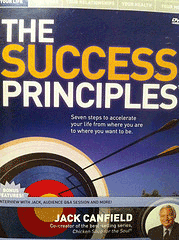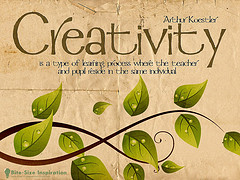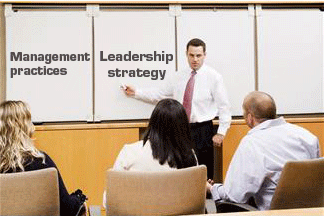Browse by Tag
- "Real" Innovation (2)
- Alignment (6)
- Business Innovation (9)
- Business Plan (2)
- Business Plans (1)
- Creativity (24)
- Critical Success Factors (4)
- Entrepreneurship (9)
- Global Competiveness (4)
- Human Side (11)
- India (1)
- Innovation (4)
- Innovation Consulting (18)
- Innovation Killers (3)
- Innovation Management (18)
- Innovation Tools (17)
- Innovation Training (24)
- Innovations (7)
- Inventions (16)
- IT Innovation (1)
- Leaders (5)
- Leadership (20)
- Leadership Development (13)
- Organizational Leadership (2)
- Organizational Strategy (20)
- Personal Values (6)
- Prediction (5)
- Strategic Innovation (38)
- strategic planning process (4)
- Strategy (3)
- Training (1)
- Vision (5)
- Weekly Dose (8)
Posts by Month
- 2014
- 2013
- 2012
- 2011
- 2010
- 2009
- 2008
- 2006
22 Principles of Innovation
Based on the last 25 years of working with local and global firms, The DeSai Group we has identified a22 Principles of Innovation. We have divided them into three categories: Organizational Success Principles, Individual and Team Success Principles and Leadership Success Principles.
When embraced, these principles create a significant difference when searching for innovations or venturing for new businesses. These principles are industry agnostic. Based on your industry, company culture, and business context, some may have more importance than others. They are all crucial in a great program design. You will need to uphold these as truths and make sure they take deep roots from day 1.

Organizational Success Principles
1. Seek innovation to alter or identify new business models. Due to the abundant number of convergences in products and industries, there is more white space today (in every sector) than ever before. Old business models are dying fast. Challenge your current business model, and perform acts of creative destruction. Work from the future back.
2. Listen for 360-degree voices. Your customers and partners are communicating their unmet needs faster and through a variety of media. Learn to listen faster. The voice of the customer alone is no longer enough. You must empathize with customers and gain new insights for their emerging and unmet needs.
3. Develop an innovation charter that defines innovation for your business. Tell everyone why it is important and what is expected of each individual at all levels as behaviors of innovation. Allow everyone to see themselves in your innovation vision.
4. Focus on developing microclimates for innovation, not the culture of innovation. This means you must find ways to make teams innovative. As more teams become innovative, culture will take care of itself.
5. Integrate innovation behaviors into your human resources performance management process.
6. C-suite and senior leaders should role-model innovation behaviors expected of others.
7. Provide basic innovation education to as many people as possible, and provide extended training to help build intrapreneurs. A good target ratio is 1% to 2% (develop 50 intrapreneurs if you have 5,000 non-factory employees).
8. Focus on fast experiments. Develop 90-day experiment plans for ideas that come from teams across the organization. Some of these ideas will surely drive powerful outcomes for your customers.
9. Define stretch challenges with a vivid vision of a future that is believable. Bigger challenges bring the best innovators forward. Real intrapreneurs are those who need stretch challenges and the freedom to test their wacky ideas-that is their currency. Liberate them to fail fast and discover ways to serve your customers. Give them candid feedback and recognize them quickly, no matter what the outcome for an experiment or a pilot. When they produce results, reward them handsomely.
10. In the beginning, provide access to off-budget funds for those who can work on challenging problems and produce fresh new solutions for growth.
11. Manage the idea bank closely-the bigger the pipeline (quantity and quality), the better the future.
Individual and Team Success Principles
12. Promote cross-functional volunteerism. Research shows that the majority of your employees bring only a portion of themselves to work. This means there is unharvested organizational potential waiting to be leashed. Allow anyone to form cross-functional teams for their great ideas. Diversity of thought is the catalyst for ideas. What any one person sees is only apart of what needs to be seen.
13. Teach people how to make what is invisible visible. No one person can see the future as clearly as a team of intrapreneurs can. Humans can see only through a lens of their past experiences. This means they never see a full reality of a situation. This thought can be humbling and, at the same time, very energizing for your best talent.
14. Learn to ask new questions before generating new ideas. Most organizations are solving the wrong problems in today's fast-paced world.
15. Prototype fast-think design on day 1. Always promote action over analysis. Sitting in the corner office idealizing issues and solutions is less effective than two people role-playing the situation for new insights.
16. Diverge then converge. Then do it again. Then do it once more. Three cycles will improve the clarity of an idea as it moves along the innovation pipeline. The very best ideas will survive.
17. Greenhouse ideas. At the very early stages, ideas must be protected just like a seed has to be protected for a plant to grow. Never dismiss an idea. Put them all in a greenhouse and protect them so they don't get shot down. Keep playing with them. It might take a few weeks or months before they are ready to be shared.
Leadership Success Principles
18. Show everyone how to derisk the future. Taking no risk can lead to stagnation. Not taking enough risk can create commoditization and price wars. Taking just enough risk at the right time can lead to market differentiation; that is called derisking the future.
19. Create healthy discontent. Provide stretch challenges and demand breakthrough solutions-once in a while. Most work is incremental. Your best innovators get bored easily. Often they are most sought after for all incremental challenges. Manage their intellectual capital between easy and complex assignments. This will keep them engaged and at peak levels of performance.
20. Communicate how innovation decisions will be made. Create an environment of transparency for idea generation, evaluation protocol, funding and experimentation.
21. Implement a reward and recognition policy that encourages proper behaviors for all, especially middle management.
22. Exhibit personal passion for innovative thinking and creativity.
The Takeaway
Innovation is a large opportunity in all organizations. However, it requires persistence, a plan and engaged employees to succeed.
Your turn. Please comment below.
1. What other innovation principles would you add to the list?
2. Which category do you feel is more important than the other two categories?
3. Do you find these principles to be industry agnostic?
6 Creativity and Innovation Books for Your Office
In my experience, all ideas come from an emotion of creativity. Many ideas are easy to find. However, the breakthrough ideas need staff that is challenged to solve the greatest problems Books in this category will help you identify the problem space as well as solution space by tapping into the hearts and minds of your people.

|
Managing Creativity and Innovation (Harvard Business Essentials) Packed with practical information designed for business readers and managers at all levels, this essential volume offers insights on managing creativity in groups, developing creative conflict, and using technology to help foster innovation. |

|
Think Better: An Innovator's Guide to Productive Thinking by TimHurson There are thousands of books about thinking. But there are very few books that provide clear how-to information that can actually help you think better. Think Better is about Productive Thinking - why it's important, how it works, and how to use it at work, at home, and at play. Productive Thinking is a game changer - a practical, easy-to-learn, repeatable process that helps people understand more clearly, think more creatively, and plan more effectively. It's based on the thinking strategies that people we celebrate for their creativity have been using for centuries. Tim Hurson brings Productive Thinking out of the closet and presents it in a way that makes it easy for anyone to grasp and use - so you can think better, work better, and do better in every aspect of your life. Think Better demonstrates how you can start with an intractable technical problem, an unmet consumer need, or a gaping chasm in your business strategy and, by following a clearly defined, practical thinking process, arrive at a robust, innovative solution. Manycompanies use the Productive Thinking model to generate fresh solutions for tough business problems, and many individuals rely on it to solve pressing personal problems. |

|
Creativity and Innovation in Organizational Teams stemmed from a conference held at the Kellogg School of Management in June 2003 covering creativity and innovation in groups and organizations. Each chapter of the book is written by an expert and covers original theory about creative processes in organizations. The organization of the text reflects a longstanding notion that creativity in the world of work is a joint outcome of three interdependent forces--individual thinking, group processes, and organizational environment.
|

|
The author of the bestselling The Art of Innovation reveals the strategies IDEO, the world-famous design firm, uses to foster innovative thinking throughout an organization and overcome the naysayers who stifle creativity. |

|
Leadership for Innovation: How to Organize Team Creativity and Harvest Ideas by John Eric Adair New ideas and new ways of doing things are one of the main ingredients in sustained business success, but how does one create the right conditions for innovation?
|

|
CATS: The Nine Lives of Innovation by Stephen C. Lundin It's time to let the CATS out of the bag . . . Curiosity might have killed the proverbial cat, but without it very real achievements would never occur. With this book as your guide, you'll learn how to spark your innate curiosity, pounce on problems in ways you never imagined, and enjoy greater success and satisfaction at work-and in your personal life. Playful, profound, and positively upbeat, CATS provides what you need to tap into your power of innovation-and then unleash it in every member of your organization. While most business thinkers view this challenge from the top down, Stephen Lundin sees the subject from a CAT's-eye view, explaining how to get every employee--no matter what level--to think and act in innovative ways. Inside, he examines the four challenges to innovation and offers practical measures aimed at conquering them. |
The Takeaway
Challenge your staff to think creatively about customer needs in new and unique ways.
Your Turn. Please comment below.
- What creativity and innovation books would you add to the list?
- Which of the books on the list did you enjoy the most?
- If only one book could be written on Creativity and Innovation what should its focus be?
INNOVATION IN 37 TWEETS
Innovation is an often written about topic. Many books and articles have been created including one of our favorites Innovation Engine written by DeSai Group co-founder Jatin Desai. We are all pulled in many directions each day. We can find it hard to spend the time reading worthwhile articles and books. Therefore, in the age of Twitter we bring you Innovation in 37 Tweets. Innovation thoughts expressed in 140 characters or less.
QUESTIONS YOU SHOULD ASK YOURSELF
- Are you relying on performance engine (short-tem growth) or using innovation engine for long-term growth?
- Do you have a solid business sponsor for the game of innovation in your organization?
- How different is your business model and its value proposition in comparison to others in the marketplace?
- How much more top-line growth can you achieve out of your current business?
- Do your managers have the insight to define new problems before others do?
- Are you skipping the step of assessing organizational readiness for innovation?
- Innovation Readiness: business case, sustained sponsorship, culture/systems, financial resources and program management?
- Is your business strategy Pioneer, Fast Follower, Imitative, Dependent, Low-cost or Specialization?
- Does your Innovation Strategy communicate why, who, what, how and when?
- Do you have too many ideas, just enough ideas or too few ideas to innovate?

STATEMENTS YOU SHOULD CONSIDER
- Innovation is bringing heart into work.
- Nucleus of innovation is tapping into people's hearts.
- Innovators have a thirst for knowledge.
- Waiters wait, managers manage, innovators create value.
- A rhythm for growth - harvesting a cultural balance between performance (left brain) and exploration (right brain).
- Your Innovation Goal should be measurable, customer focused and capable of delivering value.
- Organizations must complement the operational performance mind-set with the innovation execution mind-set.
- To achieve sustainable growth companies must better integrate product innovation with process and service innovation.
- Evolve your mechanistic, bureaucratic and hierarchical practices model towards an innovation-driven executionmodel .
- New value creation - innovate to generate differentiated new value and profit.
- Once you are ready to play the game of innovation, you will need an Innovation Scorecard.
- Create a business case for innovation and supporting innovation strategy linked to business vision and goals.
- Build a pipeline of corporate innovators -- the key talent for future growth (intrapreneurs).
- The average life span of companies on the S&P 500 has shrunk from 75 years in 1930s to just 15 years in 2000s.
- Innovation can build continuous new S-Curves for your organization.
- Without engaged employees, sustainable innovation is not possible.
- Without continuous failure there is no continuous innovation or evolution.
- Most managers are very likely to mobilize an idea if they have 80% clarity about it.
- Innovation Intent is easier to identify if the senior team has already declared its strategic intent.
- Rampant commoditization and disorder suggests that old methods of diagnosing growth challenges have been wrong.
- Globalization and Automation are causing a shortened life span for products and services.
- Innovation, if done right, should be an input to strategic planning, not an outcome.
- Optimize your innovation engine on the innovation highway - alignment, insights and mobilization are key.
- To begin your innovation journey, leaders in your company must take time to develop the innovation strategy.
- Sustainable competitive advantage necessitates sustained new innovations.
- Build your Innovation Engine to accelerate exploitation of new business ideas worthy of pursuing.
- Build your Innovation Engine to improve employee attraction, engagement and retention.
The Takeaway
Regularly re-consider your beliefs about succeeding at the game of innovation by challenging yourself.
Over to you. Please comment below.
- What other tweet length questions should we ask about Innovation?
- What other tweet length statements should we challenge ourselves with on a regular basis?
- What is your best advice on Innovation in 140 characters or less?
Innovation in Highly Regulated Environments - Global Bio-Pharmaceutical Case Study
Pharmaceuticals is an industry that impacts each one of us. Due to the highly regulated environment, it is difficult to easily drive product innovations.
Four Focus Areas for Industry Innovation
Therefore, Pharma must focus on 1) business model innovations, 2) process innovations, 3) delivery innovations, and 4) customer experience innovations.
Let's take a look at how a $26 Billion company with 30,000 employees, in 24 countries based in U.S.
Client Situation:
The client, a leading pharmaceutical company with international operations, was faced with a growth gap, having experienced several years of flat sales and heavy competition in U.S. and generics.
The company had recently initiated a global expansion program. However, they quickly realized that this endeavor would be limited and insufficient in meeting its future growth goals. The company's track record in organic growth and innovation was limited.
The challenge was to improve the company's innovation capacity, identify new growth opportunities, and have a showcase success within two years.

Six Stage Approach:
- Diagnosis: The DeSai Group diagnosed the client's current situation, past innovation successes and failures.
- Recommendation: Based upon these findings, recommendations for enhancing the company's innovation capacity were made.
- Ideation: Through a highly structured ideation process, DeSai and the client identified and clustered ideas into Value-Platforms.
- Evaluation: The various Value-Platforms were created, evaluated, and prioritized.
- Refinement: The high priority platforms were further expanded with detailed product and service value propositions.
- Final Refinement: Six teams were formed for each platform to further build out business briefs to lead to specific business plans within six months.
Results Are The Measure of Innovation Success
How did applying the DeSai Body of Knowledge impact the company?
- A Venture Board was established.
- Proposals were evaluated by the Venture Board composed of both internal and external members.
- Five candidate business ventures were selected having revenue potential of $350Million.
- The existing portfolio was evaluated and 25% of the ongoing projects were halted.
- The evaluation process yielded 20% of the client's R&D resources for re-allocation.
- An Innovation Board and Innovation Process Owner were established to lead the innovation projects.
The Takeaway
Through a climate and culture of innovation companies can continue to generate value for everyone within their stakeholder system.
Your Turn. Please comment below.
- How does your organization ideate future concepts?
- What has your experience been with Venture Boards and similar concepts?
- In what types of Innovation does your company focus?
Five Power Skills For Discovering Radical Ideas
 On October 22, 2013 Professor Vijay Govindarajan and I co-authored a blog about Discovering Radical Ideas for the Harvard Business Review Blog.
On October 22, 2013 Professor Vijay Govindarajan and I co-authored a blog about Discovering Radical Ideas for the Harvard Business Review Blog.
In the article, we outlined a five-step process to create a consistent flow of "big" ideas to transform your business for the challenges it will face in the coming years. Here is the beginning of it:
Innovation starts with new and novel ideas. Over the last 20 years, we have worked with many world-class brands to help find their next "big thing." During the initial phases of our work together, it becomes obvious that they have plenty of good ideas. Finding ideas is never the problem - initially. The challenge is finding radical ideas consistently year after year.
When we surveyed over 300 global executives between 2008 and 2009, one of the primary concerns they expressed was their inability to compete long term without a solid innovation engine that can grow their top line. In order to do this, your company needs a process to source radical ideas that can catapult your business to new heights, open up new markets, or bring in completely unfamiliar profit streams.
Convergence Drives Strategic Planning in 2013 - Part 2
Part Two: Global Scale "Convergent Thinking"- The New Main Course?
The need for "convergent thinking" is not only still on the table, but may well become the centerpiece of strategic planning for many organizations. But, just because this trend is rapidly growing, doesn't mean it's an easy road to success.
Markets are fickle. They can seem to arise overnight and die off as quickly. Studies indicate 60% of employees are disengaged and frustrated with their work and too many executives are still relying on management practices rather than leadership. This only serves to complicate the risks of innovation, not to mention what it can do to a new market entry strategy. Many organizations need to begin right here with a leadership strategy to create a more engaged, innovative and stable workforce.

Add to that the need for an aligned vision and necessary support structures to navigate the convergence of commercial enterprise with governments and NGO's, and the risks of moving into new consumer groups, platforms and new geographies, can be daunting. What shifts are necessary to consider when moving globally and what internal support is required? How ready are you to innovate?
When moving from marketing partnerships on local levels to sustainable global markets, any undertaking in international development must consider the growing role of cross-sector convergence. This entails not only possibilities for new and broader markets as technologies and business sectors converge, but must also consider how convergence is playing an increasingly key role in forming solutions to the world's most pressing issues in developing countries.
Commercial self-interest, NGO's and governments are increasingly coming together to find solutions. These hybrid organizations are challenging today's sector boundaries and outdated paradigms as never before, shifting the emphasis away from income, organizational structures and stereotypical roles. With a growing awareness that markets are inextricably linked to solutions for problems such as extreme poverty, drought, and disease in developing countries, considerations of impact and outcome are coming to the fore.

To satisfy business self-interest in new markets, a global sense of community must emerge from the global development of markets. Success in the Emerging Market Economy is a combination of access to customers and resources plus willingness and a plan to help build sustainable communities.
When it comes to the global marketplace, business, government and NGO's all see global development as the best way to create opportunities for millions of people to secure a decent life and increase prosperity. If you want the resources and the market, you must help build the surrounding sustainable community to support it.
License to operate must contain certain elements to succeed, varying by region and company size, including:
- Compliance with law
- Risk management
- Reputation enhancement
- Value added to communities
Companies must address sustainability factors from human resource management and respect for local cultural values to eco-efficiency and social responsibility including helping to limit climate degradation and loss of biodiversity. For example, as viewed on the Chinese cable network in the past few weeks, workers are rising up in protest of environmental degradation. Very simply, they too want to breathe clean air, drink clean water and be treated with respect. Good working relationships at all levels help create a more even road for sustainability.
The business case for sustainability in emerging markets can actually work to pinpoint opportunities in Asia, Africa, Central and Eastern Europe, Latin America and the Middle East, but be aware responsible business conduct needs to step up. To develop new global markets built on ever expanding cross-sector convergences, strategy must now include linking to the communities involved. It's looking like these markets will arise from the convergence of solutions built on innovative relationships responding to converging challenges and employing new approaches. Hiding behind outdated management practices - no longer an option.
What are your challenges and what value do you see in utilizing an Innovation Readiness Assessment for strategic planning?
Convergence Drives Strategic Planning in 2013 - Part 1
Part One: What's on Your Strategic Menu? - Some Factors to Consider
Domestic and international politics, finances and markets loom large in organizational planning in 2013, but the trend towards global development remains a constant in this convergent economy. Global development is expanding, and an important factor to consider when planning and developing strategy for new markets and sustainable innovation models. With resources and markets scattered all over the globe, if you're in business, you're global, at least on some level.
When it comes to planning and global markets, leadership needs to consider the driving forces of convergent economies. For businesses with traditional organizational structures and stereotypical roles this brings continuing challenges. To facilitate forward movement they will likely be required to allow new ideas to find form and implementation. As convergence gains momentum, this primary leadership competency of strategically allowing flow and change becomes no longer optional, but necessary to design an organization's desired future.
With commercial businesses, governments, and NGO's increasingly finding the need and desire to converge to facilitate global development, grow the global economy, attain global resources, and manage suppliers, customers, employees, partners and technologies, these new strategic alliances will continue to blur lines. These collaborations will for instance, create new issues and challenges for stakeholders, funding, competition, growth opportunities, to cite just a few.
Within old markets innovation is essential to survival. New ideas are copied so easily across single sectors, that far from being a fad, innovation is vital to existence. Whether talking automobiles in the US market, opening new Asian markets for products, or even fundraising for non-profits, new ideas become global property in a sense, as soon as they see any form of media, so acting fast and decisively is a priority; and then be ready to do it again and again. In other words, keep acting like an entrepreneur, Think Small and Fast.

Customer driven innovation is apparent in the new Ford Escape with it hands-free lift-gate. What a great idea for the owner out shopping, without a hand free to open the hatch. Campbell's 2013 growth strategy includes expanded presence in emerging markets. North America will see increased offerings in soup, simple meals and healthy beverage choices - more aware consumers want quick, but nutritionally better choices. President and Chief executive Officer Denise Morrison stated that Campbell's will carefully attend to its core business, "while we shift our center of gravity toward new consumer groups, new consumer needs, new consumer platforms and new geographies."
Keeping ahead of the curve means harvesting innovative ideas from all available sources, including customers, suppliers, and adjacent sectors as well as your in-house intrapreuneurs. We've seen enormous growth in cross-sector convergence giving rise to new products and markets. Cosmeceuticals, Nutricosmetics, Nutraceuticals and Digital/Analog are just a few examples of scientific advancements and markets converging, and these are huge new markets.
As technologies and markets continue to advance there is every reason to believe this is just the beginning. Identifying your core competencies, keeping inquiry going on all fronts, adjusting to sector trends, recognizing convergences and knowing how to position products are all essential for innovation, growth and sustainability.
Targeting new opportunities requires both innovation and branding strategies. Take for example how Mazda has chosen to structure and innovate in the global market. Recognizing that larger rivals tend to aim for market center, where size alone gives them an edge, Mazda adjusted its aim and found success targeting "inside high" for their cars. Mazda continually identifies and tweaks their "strike zones" for cars, sports cars, minivans and B-cars in the US, Europe and Japan, where markets are always changing and evolving, as well as in emerging markets.

Effective innovation for consumer goods, while challenging to come by, is always the key to sustained competitive advantage. Convergence presents challenges, but also many more opportunities. Take for instance, two brands teaming up. Pepsi Max Citrus Freeze and Doritos Jalapeno Fire launched a "complementary flavors" joint promotional campaign. Reportedly there was a significant increase in sales for both products as it drove consumers to purchase both together.
Co-creation as best practice has its place, when well placed. Customer communities and co-creation must figure ever larger in the strategic planning process. The process must create brand value and customer value for further innovation to continue to deliver sustainability.
So, what does your plan look like for the coming year? Does it include new global markets, new cross-sector markets, better customer out-reach, new alliances, niche markets, or still undecided?
What about the role of developing emerging markets, global development and the global convergent economy?
Watch for:
Convergence Drives Strategic Planning in 2013 - Part Two: Global Scale "Convergent Thinking"- The New Main Course?
IT Leadership: Grab A Tiger by the Tail
Shortly after taking office, President Obama’s CIO (Vivek Kundra) formed a “tigre” team (technology, innovation, and government reform) in order to implement IT reform within the US government The US IT budget representing an astounding $80B, representing over 2,000 data centers.

This recent article by the Sydney Morning Herald highlights Mr. Kundra’s focus on IT transparency including an online IT dashboard with performance rankings. The result of his effort was a shift towards consolidation (to increase datacenter capacity) and virtualization (to leverage cloud-based provisioning speed and consumption based costing).
While Mr. Kundra has since moved on (he joined Salesforce.com after a brief stint at Harvard), his innovative IT dashboard lives on as an open source offering. More importantly, he highlighted the importance and value of IT transparency.
Corporate IT department can learn a lot form Mr. Kundra’s TIGRE initiative. The most important lesson and most difficult being practices of transparency. If your IT organization is trying to figure out how to drive more value, innovation can help, but innovation without transparency will give you only average results. IT leaders can produce breakthrough value by building innovation behaviors at every level. This requires transparency between employee and their managers, and transparency between IT and the business units.
The 4 Principles Of Delusional Economics
When it comes to economic theories, there is plenty of fascination in the business world around how to explain what drives business and purchasing activities. Behavioural economics, the field of economics concerned with examining why people behave the way they do when it comes to their purchasing behaviour, is hot right now. Bestselling books like Freakonomics and Predictably Irrational dig deep into the psyche of people to try and explain seemingly illogical actions.

Here are the four key principles of Delusional Economics, and how you might avoid applying them to your own small business:
1. Change a customer’s worldview
2. Getting people to pay for something that is currently free
3. Basing a business model on revenue from nonexistent advertisers or customers
4. Overestimating a customer’s ability to appreciate value worth paying a premium for
Source: OPEN Forum
15 Killer Questions to help build a New Marketing Strategy
So you think you need a new marketing strategy? Or do you want to make sure your current marketing strategy is solid. Review and answer the following killer questions to help you develop maximum clarity quickly.
- Is there a written strategic plan and/or marketing plan with measurable goals? If not, what is the goal of a new marketing strategy? To achieve what?
- What is driving the new “go to market strategy” and what are the expectations from the corporate view?
- Are the products the same or repositioned?

- Has a USP (Unique Selling Proposition) been formulated and tested?
- Is there a plan for implementing and supporting the sales & marketing through third parties; including: training, allocation of transactions, measurement systems, staffing, etc.?
- If repositioned, have focus groups been used for strategy evaluation? With ultimate customers?
- What is the risk of product cannibalization? For your company and other similar products?
- If products not significantly changed, why the marketing change?
- How does the competition go to market with these or similar products?
- What are the advantages vs. disadvantages of options such as direct selling…different costs, service quality, close rates, margins, training?
- How would these products fit into the company strategy? How would these products, being sold through currently, add value in the eyes of the company customers?
- What marketing vehicles have been explored to assure success…direct mail, solicitation, co-marketed with other products, etc.?
- Are there plans to test market this strategy using a controlled study with market segment variables, such as income, geodemographics, age, penetration by competition, pricing, etc.?
- To what extent has market sizing studies been performed and corresponding budgets developed?
- How have you integrated Social Networking into the strategy?
Implementation
Option-1: Answer above questions yourself. Distribute the list with answers to your colleagues in your area and outsides your area and in other business units. Ask them to make your answers better (improve) or add new questions and the answers you had not thought of.
Option-2 (4 hours): Run an ideation session. Depending on number of participants, set up working group (round) tables by assigning equal number of participants per table. Assign a question to each table and have them generate ideas using various idea generation Innovation Tools. Give 30 minute per question. Once completed, have each table pick Top 3 ideas and post them on a Top Ideas list at the front of the room. Repeat for each remaining question.

